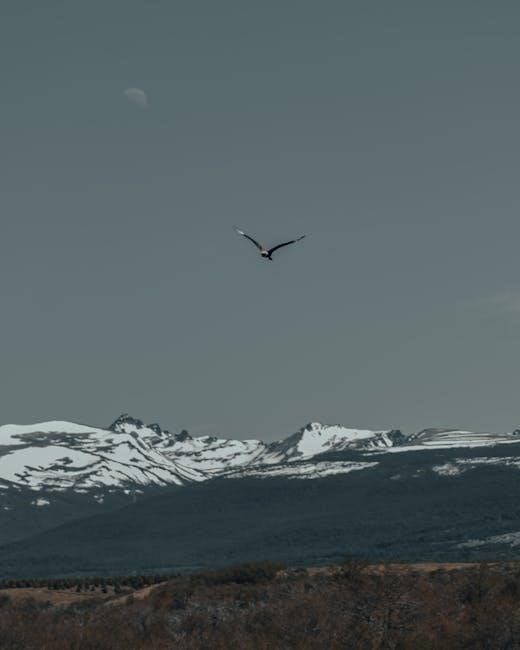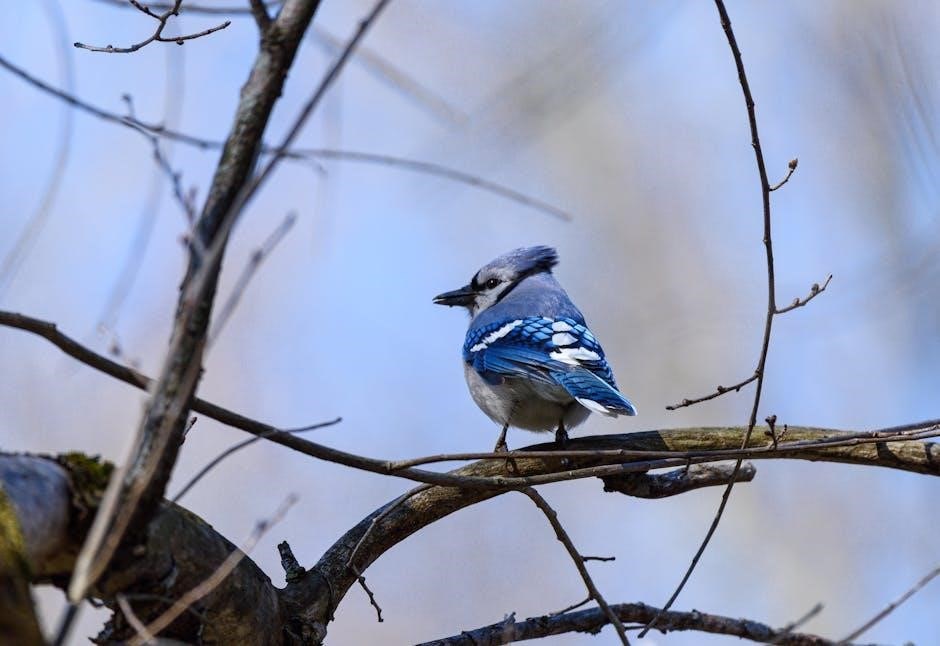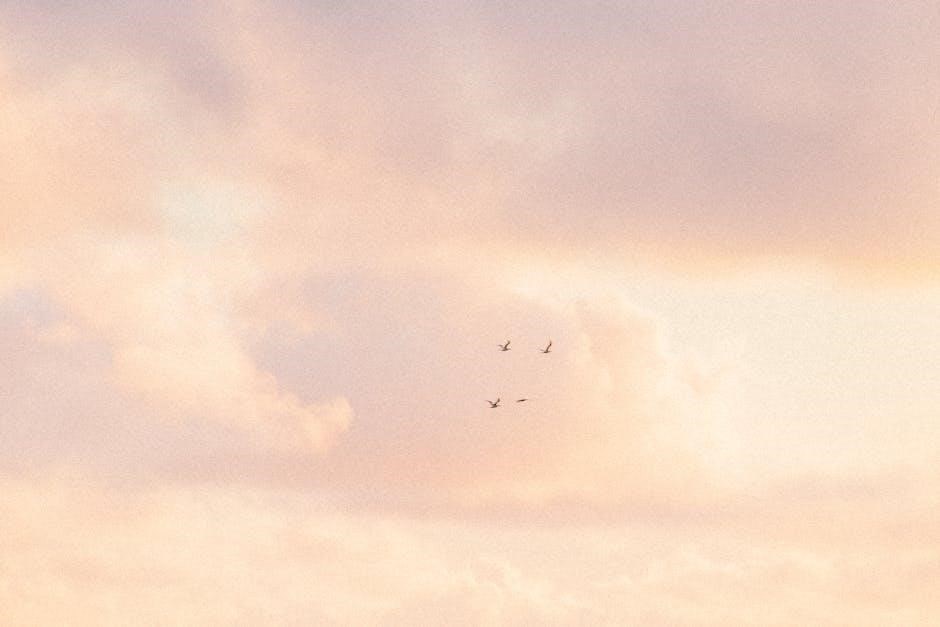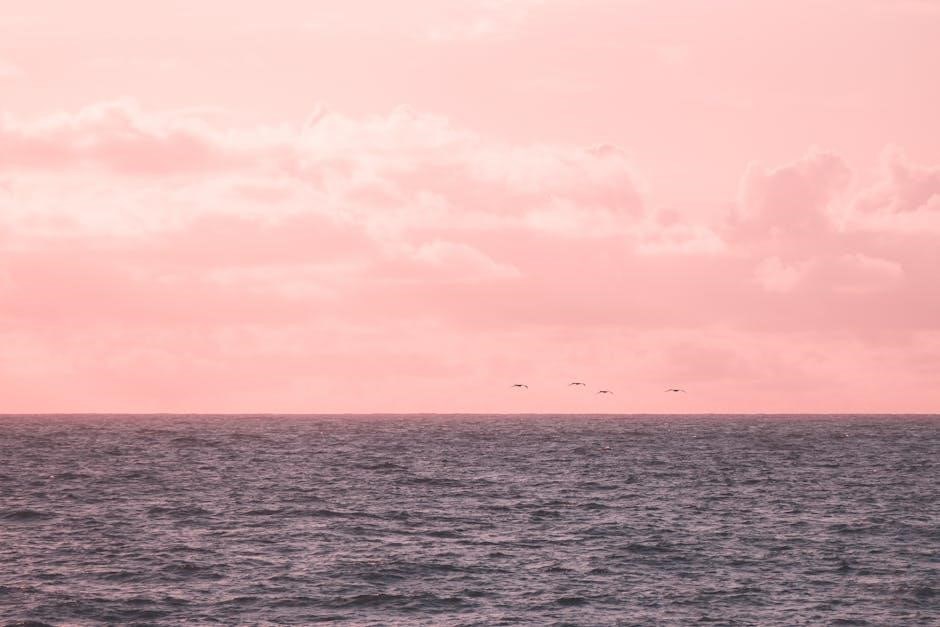
birds of hawaii guide
Hawaii’s birdlife is a testament to unique biodiversity‚ with over 130 native species once thriving. Today‚ only a fraction remain‚ highlighting the importance of conservation efforts to protect these avian treasures.
1.1 Unique Diversity of Hawaiian Birds
Hawaii’s birdlife showcases extraordinary diversity‚ with species evolving in isolation for millions of years. From the vibrant Hawaiian honeycreepers to the elusive Hawaiian petrels‚ these birds exhibit unique adaptations. Once boasting over 130 native species‚ Hawaii’s avifauna developed distinct traits‚ separating them from mainland birds. However‚ this isolation also made them vulnerable to invasive species and habitat loss. Today‚ only a fraction of these species remain‚ emphasizing the urgent need for conservation to preserve this irreplaceable biodiversity and ecological heritage.

Evolutionary History of Hawaiian Birds
Hawaii’s birds evolved in isolation for millions of years‚ developing unique traits. Once home to over 130 native species‚ these birds adapted distinctively‚ shaping their ecological roles.
2.1 Origins and Adaptation of Native Species
Hawaii’s native birds originated from ancestors that colonized the islands millions of years ago. Over time‚ they evolved unique traits‚ adapting to Hawaii’s isolated ecosystems. Species like the Hawaiian Duck and Moorhen developed distinct behaviors‚ while honeycreepers diversified into various forms. Geological events‚ such as lava flows‚ provided datable evidence of their evolutionary paths. This isolation fostered remarkable biodiversity‚ with birds occupying specific ecological niches. Their stories reveal a fascinating history of adaptation and survival in one of Earth’s most remote archipelagos.

Native Bird Species of Hawaii
Hawaii is home to a variety of unique native birds‚ such as the Hawaiian Duck‚ Moorhen‚ and Honeycreepers‚ each showcasing remarkable diversity and adaptation to island life.
3.1 Hawaiian Duck (Koloa Maoli)
The Hawaiian Duck‚ or Koloa Maoli‚ is a rare and endangered species endemic to the islands. It is the only duck native to Hawaii and closely resembles the Mallard. Historically widespread‚ its population has drastically declined due to habitat loss and competition with introduced species. Conservation efforts are underway to protect this unique waterbird‚ including breeding programs and habitat restoration. The Koloa Maoli is a vital part of Hawaii’s ecological and cultural heritage. Its survival is crucial for maintaining the islands’ biodiversity.
3.2 Hawaiian Moorhen (Alae Ula)
The Hawaiian Moorhen‚ or Alae Ula‚ is a rare waterbird endemic to Hawaii. It belongs to the rail family and is known for its distinctive red bill. Once widespread‚ its population has declined due to habitat loss and invasive predators. The Alae Ula inhabits freshwater wetlands and marshes‚ feeding on small aquatic organisms. Conservation efforts focus on protecting its habitat and reducing threats from introduced species. This bird holds cultural significance in Hawaii‚ featuring in traditional stories and art‚ making its preservation vital for ecological and cultural reasons.
3.3 Hawaiian Honeycreepers
Hawaiian Honeycreepers are a group of unique‚ nectar-feeding birds endemic to the islands. With over 50 historical species‚ they represent one of Hawaii’s most remarkable evolutionary achievements. These birds adapted to various ecological niches‚ developing specialized beaks for feeding on nectar‚ insects‚ and seeds. Their vibrant plumage and diverse songs make them iconic. However‚ many species have disappeared due to habitat loss and invasive species. Conservation efforts focus on protecting remaining populations and their habitats‚ ensuring the survival of these avian jewels that are integral to Hawaii’s ecosystem and cultural heritage.

Introduced and Invasive Bird Species
Introduced bird species such as the Gray Francolin and Red Junglefowl have significantly impacted Hawaii’s native bird populations‚ contributing to habitat disruption and biodiversity loss.
4.1 Common Introduced Species and Their Impact
Gray Francolin‚ Red Junglefowl‚ and Chukar are among the most common introduced bird species in Hawaii. These birds‚ often thriving in human-altered landscapes‚ compete with native species for resources. Their presence disrupts local ecosystems‚ contributing to habitat loss and the decline of endemic birds like the Hawaiian duck and moorhen. Invasive species also spread seeds of non-native plants‚ further altering habitats and exacerbating ecological challenges for native bird populations.
Threats to Hawaiian Bird Populations
Habitat loss and invasive species are primary threats to Hawaiian birds‚ leading to population decline and ecosystem disruption‚ endangering native species like the Hawaiian duck and moorhen.
5.1 Habitat Loss and Invasive Species
Habitat loss and invasive species are critical threats to Hawaiian birds. Deforestation and urbanization have destroyed native habitats‚ while invasive plants like strawberry guava outcompete native vegetation. Introduced predators such as rats‚ cats‚ and mongooses prey on birds and their eggs. Mosquitoes also spread diseases like avian malaria. These factors have drastically reduced native bird populations‚ with only 17 of 50 original forest bird species remaining. Conservation efforts are essential to restore habitats and control invasive species to protect Hawaii’s unique avifauna.
Conservation Efforts for Hawaiian Birds
Conservation efforts focus on habitat restoration‚ species protection‚ and invasive species control. Protected areas and community partnerships aim to safeguard Hawaii’s avian heritage for future generations.
6.1 Protecting Endangered Species and Habitats
Efforts to protect Hawaii’s endangered bird species focus on habitat restoration and invasive species control. National parks and wildlife refuges provide safe havens‚ while programs monitor and breed rare birds. Community involvement and education play a crucial role in conservation. Legislation and public awareness campaigns aim to reduce threats like deforestation and pollution. Protecting these unique species ensures the preservation of Hawaii’s rich avian heritage for future generations to enjoy and study.
Birdwatching in Hawaii
Hawaii offers a unique birdwatching experience‚ with species like the Hawaiian thrush and honeycreepers. Guides and maps highlight prime locations‚ making it a paradise for enthusiasts.
7.1 Best Locations for Birding Enthusiasts
Hawaii’s diverse landscapes offer exceptional birding opportunities. Key locations include Hakalau Forest National Wildlife Refuge on Hawai‘i Island‚ known for endangered honeycreepers‚ and O‘ahu’s James Campbell National Wildlife Refuge‚ home to the Hawaiian moorhen. Maui’s Haleakalā National Park and Kaua‘i’s Kilauea Point National Wildlife Refuge are also hotspots‚ featuring species like the Hawaiian petrel and Laysan albatross. These sites provide stunning habitats for both native and migratory birds‚ making them must-visit destinations for enthusiasts.

Cultural Significance of Birds in Hawaii
Birds play a vital role in Hawaiian culture‚ symbolizing spiritual connections‚ appearing in myths‚ and being integral to traditional rituals and rich storytelling.
8.1 Birds in Hawaiian Mythology and Traditions
Birds hold a sacred place in Hawaiian mythology‚ often symbolizing spiritual messengers and divine connections. In ancient traditions‚ they were believed to carry prayers to the gods and possess mystical powers. Stories of birds guiding navigators and inspiring chants highlight their cultural significance. Feathers were used in royal cloaks and rituals‚ signifying status and spirituality. The Hawaiian petrel‚ or uau‚ was revered for its ability to navigate between earth and the spirit world‚ embodying resilience and wisdom. These avian symbols remain integral to Hawaii’s rich cultural heritage.
Hawaii’s avian heritage is a fragile yet vital part of its ecosystem. Conservation efforts are essential to preserve these unique species for future generations to cherish.
9.1 The Future of Hawaii’s Avian Heritage
The future of Hawaii’s birdlife hinges on robust conservation efforts. Protecting habitats‚ combating invasive species‚ and fostering community engagement are critical. Organizations are working tirelessly to restore ecosystems and reintroduce native species. Public awareness campaigns and educational programs play a vital role in safeguarding these birds. Despite challenges like climate change and habitat loss‚ concerted efforts offer hope. The preservation of Hawaii’s avian heritage requires a collective commitment to ensure these unique species thrive for generations to come.
Leave a Reply
You must be logged in to post a comment.